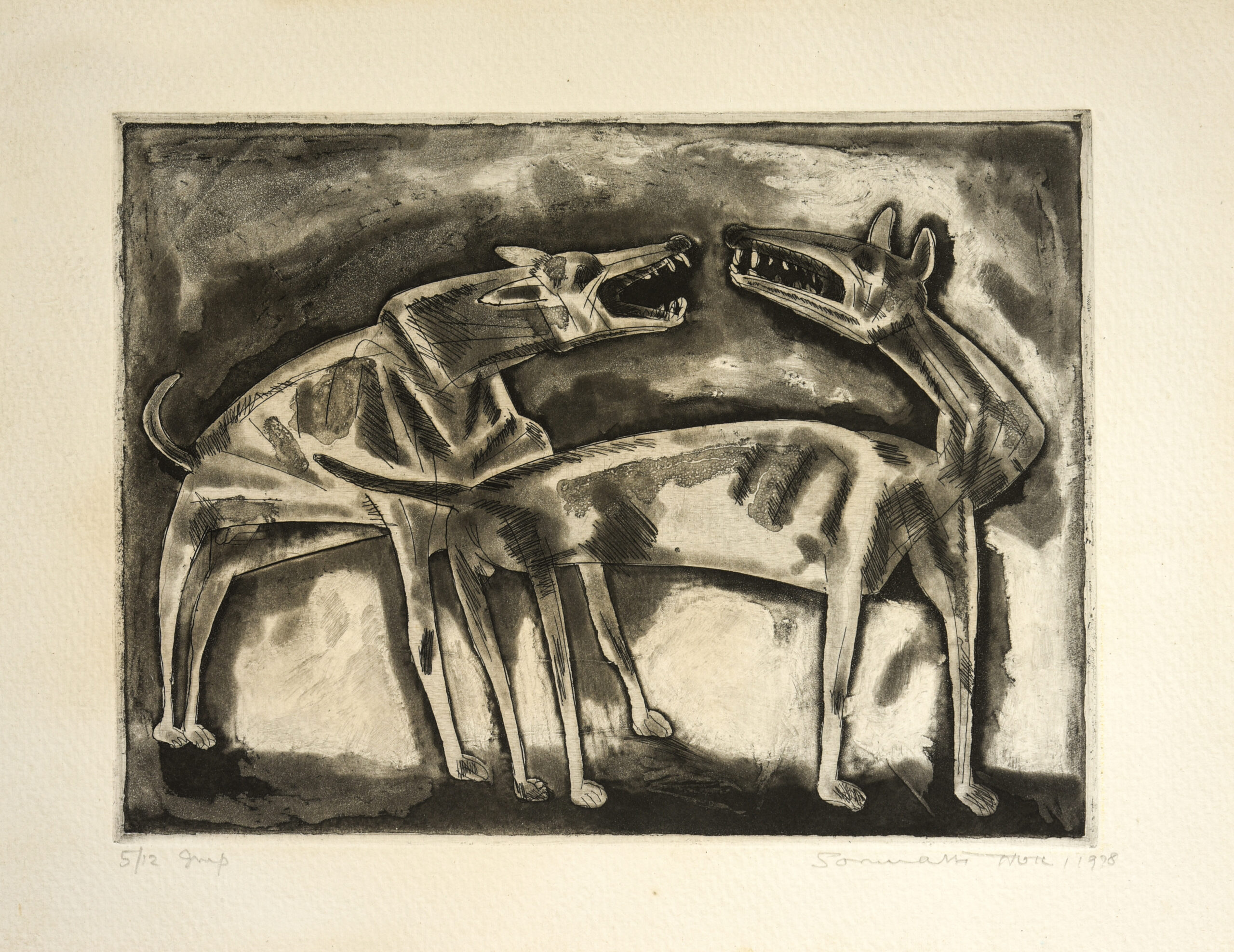APPROPRIATING IDENTITY: CONTEMPORANEOUS ‘FOLK’ AND ‘TRIBAL’
VIKAS HARISH
Even when photography was new in Europe, it was first introduced in Calcutta, India in the 1840s. The earlier drawings ‘Europeanised’ India, self-confessed by colonial officers, in an exotic representation of the artists perception. Photography then presented a certain ‘stern fidelity’ to the subject. The images were no longer reminiscent of European symbolism but were chosen closer to the actual reality of the subject. Later identified as its ‘indexicality’, photography soon became the preferred medium of documenting the ‘Native Inhabitants’, as “its superiority over other more equivocal signs, which gave it such importance in the colonial imagination” (Pinney, 1997).
Colonial projects of identifying and classifying the Indian population in a multitude of census related projects gave birth to a new format vis-à-vis photography, ‘environmental portraiture’. In anthropological documentation a homology was established between the subject and his environment. The Indian subjects were often depicted with tools of their trade, a sweeper with his broom, the forest hunter with his bow and arrow. The People of India published in 1868 by the colonial administration of India was a pictorial study of India’s native population originally issued in eight folio volumes. Lavishly illustrated, with 468 individually mounted albumen print photographs it provided an ‘impressive visual record’ of the multiplicity of Castes, Tribes and Trades that made up the diverse population of the sub-continent in the mid 19th century. Series of photography from the late Nineteenth and early Twentieth century took Indians as subjects for documentation, in profile and in face, highlighting physiognomy, being measured for ethnographic traits. A group was often orchestrated in neat rows, with faces indexed to elucidate ethnic origin. The documentation was concerned not with the individual but with categories, often mixing tribal and rural, higher and lower caste, this was a ‘textualisation’ of the ‘image’ that India presented. “Particular attention was devoted to markers of difference, to visible signs which could be tabulated against group identities. This quest for difference tended to make the women of the group of more interest, since their costume and material culture were identified as being resistant to change” (Pinney, 1997). Thousands of photographic postcards depicting Indian courtesans and ‘nautch girls’ anglicised form of the Hindi word for dance, were published as objects of male desire, carefully mounted in albums which acted as the collectors’ personal harems. Photography soon became the fashionable medium that literally was an extension of the concurrent cabinet of curiosity.
With independence of the country in 1947 came a new kind of photography, the willingness that came from admiration of the ‘other’, of awe, that began to now photograph the rural and tribal India in its ‘innocence’ and ‘sensuality’. These were images taken by urban Indian .photographers almost concomitant at a time when the future first Prime Minister of India, Nehru, wrote the Discovery of India (1942-46). There was re-appropriation of the Indian identity. Hence the depiction of the ‘other’ changed. There were two kinds of images that emerged. The state governed images of tribal communities and people often as they came to the urban areas, but also private images of photographer’s voyage. The latter were no longer merely representative of the group but of the eroticisation, often of lewdness, of scantily dressed feminine body. In the words of a photographer from those times, “I went to the Tribal Villages because I came to love these people, and felt happy and relaxed with them… I loved the exciting visual stimulus of the costumes and the natural beauty of the people which was a joy to photograph” (Janah, 2003).
The eroticisation and exoticisation of the tribal that commenced with the early visits of photographers to their faraway dwellings were even taken by a mainstream India, in cinema and in publicity, to permit nudity in an otherwise prude nation. In the 1960s and 70s, in an inversion of space, the rural often even wilderness became the excuse for the urban heroine to don the attire of the tribal women. Stress here was on revealing garments that provided the requisite ‘permission’ for titillation that was exaggerated from the reality of the tribes (Harish, 2010). There was a case for national pride in exaggerated tableaus that were included in Republic Day parades as an ode of rural or tribal India. 
This exotic, often erotic, image of the tribal or folk rural populace strengthened a culture of looking at them as the others, the outsiders, objects of marvel, of creative genius that may be admired from the comfortable distance of ‘touristic’ viewers, even within India.
“…arts (that) are grounded in the consciousness that the earth is structured on the land mass of India. Arising out of a primordial vision that reaches out towards the cardinal directions, observes the sacred contours of the land, delineates the sanctity of enclosed spaces, names the guardians of the cardinal points of direction and establishes the sacred altars, or pithas of the goddess at the extremities of the country, these arts are infused with insights charged with delight: insights that have established holy places at the confluence of rivers, on the peaks of mountains. On the sea shore, and in the midst of dense forests.”(Jayakar, 1990)

